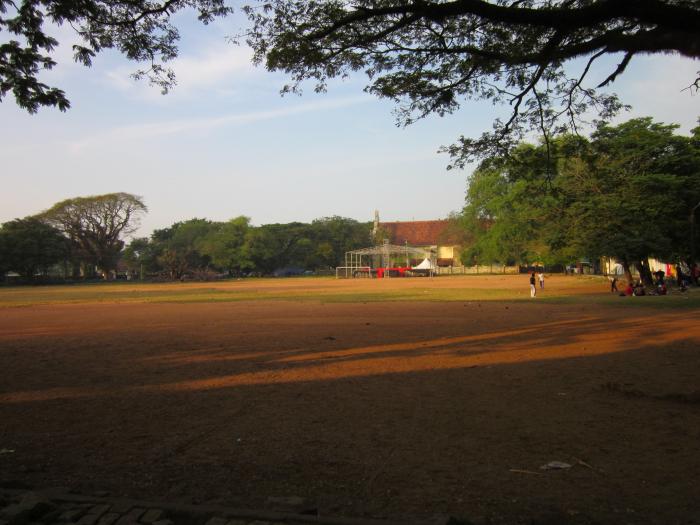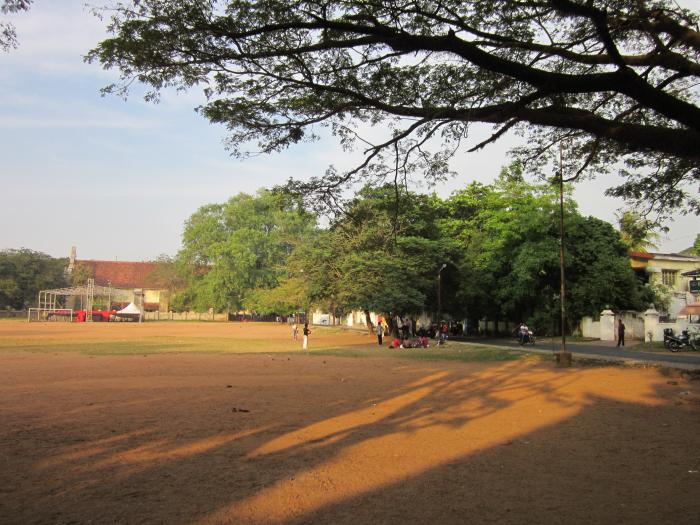Visiting Kerala and not viewing a kathakali performance is like going to Italy and not eating pizza. Get there early so you can go backstage and watch the performers wear their extravagant make-up and costumes before the show begins. If you’re not pressed for time, try and catch a concert featuring classical dance forms likeBharatnatyam, Mohiniyattam or Kalaripayattu (a traditional form of martial arts) demonstration, and if you’re lucky, a religious performance of the flamboyant Theyyam. If you’re inspired to stay on and become a professional, you could always enroll in a short class at a dance academy.
Fort Kochi is a region in the city of Kochi in the state of Kerala, India. This is part of a handful of water-bound regions toward the south-west of the mainland Kochi, and collectively known as Old Kochi or West Kochi. Adjacent to this is Mattancherry. In 1967, these three municipalities, along with a few adjoining areas, were amalgamated to form the Corporation of Cochin.
Search This Blog
Saturday, December 20, 2014
Discover the Arts
Visiting Kerala and not viewing a kathakali performance is like going to Italy and not eating pizza. Get there early so you can go backstage and watch the performers wear their extravagant make-up and costumes before the show begins. If you’re not pressed for time, try and catch a concert featuring classical dance forms likeBharatnatyam, Mohiniyattam or Kalaripayattu (a traditional form of martial arts) demonstration, and if you’re lucky, a religious performance of the flamboyant Theyyam. If you’re inspired to stay on and become a professional, you could always enroll in a short class at a dance academy.
St. Francis Church
Situated : St. Francis Church Road, Fort Kochi
Known to be India’s first European church, it curiously transformed from a Roman Catholic Church during Portuguese rule (in 1503) to a Dutch Reformist Church (in 1664) to, finally, an Anglican Church (in 1804). Popular as the resting ground of Vasco da Gama, who was buried here in 1524, it attracts hundreds of tourists from all over the world; even though his remains were sent to Lisbon 14 years later.
If you’re a fan of fans, don’t forget to see the antique, hand-operated fans used here that are worked manually with ropes on either side.
Saturday, December 13, 2014
The Spa Experience
People come to Kerala from all over the world just to soak in a traditional Ayurvedic treatment, so make sure you don’t leave without trying one. Since the practice originated here, the options are endless, but one of the most popular treatments is Shirodhara, a gentle pouring of herbal oils over the forehead to treat a variety of conditions.
Sunday, October 5, 2014
Parade Ground
Timings : Always open
Situated : Parade Ground, KB Jacob Rd, Near Bishop House
 Covering more than four acres, the Parade Ground was used during Portuguese, the Dutch and the British colonial periods predominantly for conducting military drills and parades. Some of the fine old building that surround the ground housed the defense establishments of these powers. This continued until the tricolor was hoisted at the Ground in 1947. .Today it is the largest open green in Fort Cochin, serving as a sports ground where Cricket, Hockey, Soccer (a.k.a Football ; Lol) and other improvised games are played.
Covering more than four acres, the Parade Ground was used during Portuguese, the Dutch and the British colonial periods predominantly for conducting military drills and parades. Some of the fine old building that surround the ground housed the defense establishments of these powers. This continued until the tricolor was hoisted at the Ground in 1947. .Today it is the largest open green in Fort Cochin, serving as a sports ground where Cricket, Hockey, Soccer (a.k.a Football ; Lol) and other improvised games are played. The Ground, once green and well maintained, has very little or nothing of its past glory. However, with the St Francis Church on one side and the VOC Gate and Cochin Club on the other, this historical landmark is still a picturesque sight.
Saturday, October 4, 2014
The Dutch Cemetery
Timings : Always closed
Situated : Dutch Cemetery Road, Fort Kochi
The tomb stones here are the most authentic record of the hundreds of Europeans who left their homeland on a mission to expand their colonial empires and changed the course of history of this land. The cemetery was consecrated in 1724 and is today managed by the Church of South India.
The cemetery had been closed for a long time and it's still closed. Visitors have been viewing the tombs from outside the gate of the cemetery.
The cemetery had been closed for a long time and it's still closed. Visitors have been viewing the tombs from outside the gate of the cemetery.
Mattancherry Palace a.k.a Dutch Palace
Timings : Everyday except Friday from 10 am to 4:30 pm
Situated in : Mattancherry, near Boat Jetty.
Entrance fee : For Adults 5₹ ; Free for Children.
Phone : 0480 2226085
Unauthorized photography is prohibited inside the palace.
(as per updated on 04/10/14)
The Mattancherry Palace is a Portuguese palace popularly known as the Dutch Palace, in Mattancherry, Kochi, in the Indian state of Kerala features Kerala murals depicting Hindu temple art, portraits and exhibits of the Rajas of Kochi.
This palace was built by the Portuguese and presented to Raja of Cochin in 1555 A.D. Though built by Portuguese, it is Popularly known as the 'Dutch Palace' as the Dutch renovated it during their sort-lived reign here. The palace is well known for it's mural paintings, which are noted for their high level of excellence. These paintings represent from the epics of Ramayana and Mahabharatha.
Situated in : Mattancherry, near Boat Jetty.
Entrance fee : For Adults 5₹ ; Free for Children.
Phone : 0480 2226085
Unauthorized photography is prohibited inside the palace.
(as per updated on 04/10/14)
The Mattancherry Palace is a Portuguese palace popularly known as the Dutch Palace, in Mattancherry, Kochi, in the Indian state of Kerala features Kerala murals depicting Hindu temple art, portraits and exhibits of the Rajas of Kochi.
This palace was built by the Portuguese and presented to Raja of Cochin in 1555 A.D. Though built by Portuguese, it is Popularly known as the 'Dutch Palace' as the Dutch renovated it during their sort-lived reign here. The palace is well known for it's mural paintings, which are noted for their high level of excellence. These paintings represent from the epics of Ramayana and Mahabharatha.
The palace is a quadrangular structure built in Nālukettu style, the traditional Kerala style of architecture, with a courtyard in the middle. In the courtyard there stands a small temple dedicated to 'Pazhayannur Bhagavati', the protective goddess of the Kochi royal family. There are two more temples on either side of the Palace, one dedicated to Lord Krishna and the other to Lord Siva. Certain elements of architecture, as for example the nature of its arches and the proportion of its chambers are indicative of European influence in basic Nāluketttu style..
The Dining Hall has carved wooden ornate ceiling decorated with a series of brass cups. The palace also contains rare examples of traditional Kerala flooring, which looks like polished black marble but is actually a mixture of burned coconut shells, charcoal, lime, plant juices and egg whites.
Subscribe to:
Posts (Atom)





